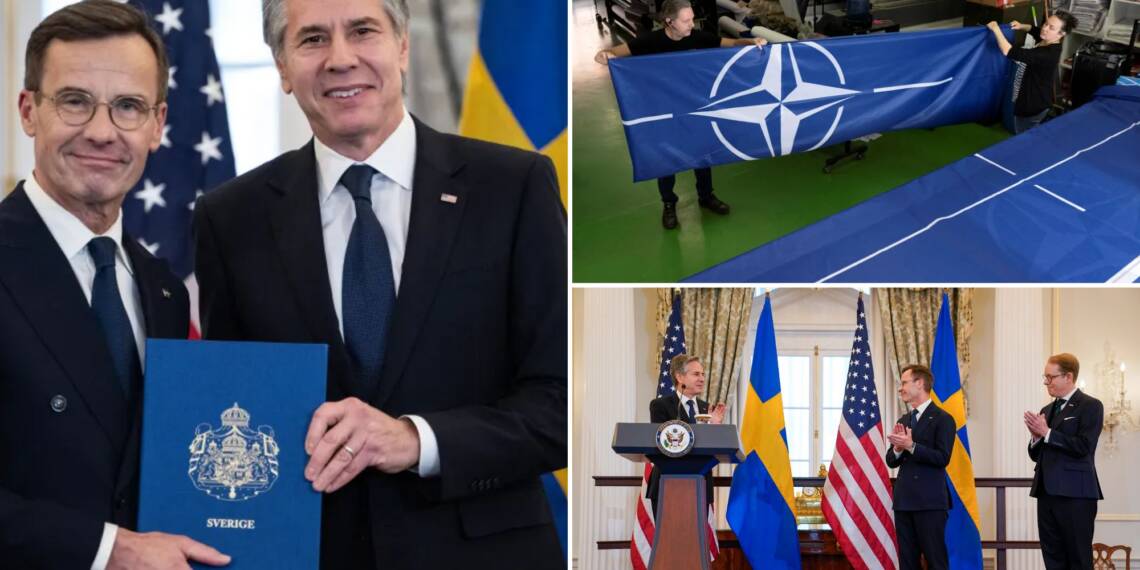Sweden has officially hit the panic button as the European Union faces increasing instability. What began as an ambitious move to join NATO and strengthen alliances against Russia has evolved into a stark reality check for Europe’s security.
The catalyst for this shift? The 47th U.S. President, Donald Trump, who made it clear that without the United States, the European Union’s defence capabilities are significantly weakened. This realisation has prompted Sweden, NATO’s newest member, to ramp up its defences like never before.
Prime Minister Ulf Kristersson has announced Sweden’s largest military expansion since the Cold War, with defence spending set to rise to 3.5% of GDP by 2030. The move comes in response to the evolving security landscape in Europe, particularly in light of Russia’s war on
Ukraine and uncertainties surrounding future U.S. commitments to European security.
“I don’t want us to act in a way that undermines the possibility of transatlantic cooperation. But we also cannot assume or take for granted that the United States will continue to act in Europe as it has over the past 80 years,” Kristersson stated.
Sweden’s NATO Shocker
This decision follows Sweden’s recent NATO membership, ending its long-standing neutrality due to mounting concerns over Russia’s military actions. The Swedish government has pledged an additional 300 billion Swedish kronor (29.8 billion U.S. dollars) towards defence through 2035, reinforcing its commitment to NATO’s collective security framework.
Trump’s persistent criticism of NATO members for inadequate defence spending has influenced Europe’s approach to military preparedness. NATO Secretary-General Mark Rutte has encouraged member states to allocate at least 3% of GDP to defence, up from the previous 2% target.
Sweden’s rearmament marks a pivotal shift in Scandinavian security, transforming its military landscape and influencing regional security dynamics across Europe. The Swedish Army is undergoing structural reforms, prioritising rapid deployment capabilities, particularly in key strategic locations like Gotland, an island crucial for controlling Baltic Sea operations. In 2024,
Sweden achieved a record high in military exports, reaching 2.9 billion U.S. dollars, reflecting a 63% increase from the previous year.
Sweden’s geographical position makes its military expansion particularly significant. The Baltic Sea remains a key point of contention between NATO and Russia, with the Baltic states—Estonia, Latvia, and Lithuania—relying on strategic reinforcements in the event of a conflict. Gotland’s fortified position complicates any potential Russian aggression in the region.
Beyond the Baltic, Sweden’s move aligns with broader Scandinavian defence efforts. Finland, which shares a 1,340-kilometre border with Russia, has urged Sweden to take a greater role in regional security. With Norway, Denmark, and Finland also increasing defence investments, Sweden’s NATO membership strengthens collective defence efforts in Northern Europe.
From Moscow’s perspective, Sweden’s military buildup, coupled with its NATO integration, signals further Western encroachment. Russia has long opposed NATO’s eastward expansion, and Sweden’s accession further isolates Moscow in the Baltic region.
Russian Threat Panics Stockholm
Russia has already responded by increasing its military presence in Kaliningrad, a heavily armed exclave between Poland and Lithuania, and has enhanced its naval patrols in the Baltic Sea. The Kremlin has warned that Sweden’s NATO membership makes it a potential target in any future confrontation.
Sweden’s growing military capabilities benefit NATO significantly. The country’s defence industry, led by Saab, produces advanced fighter jets, submarines, and radar systems that strengthen the alliance’s technological edge. Sweden’s Gripen fighters, designed for rapid deployment, and its advanced submarines provide NATO with enhanced anti-submarine warfare capabilities against the Russian Navy.
Maintaining high levels of defence expenditure poses another challenge. Economic fluctuations could impact Sweden’s ability to sustain long-term military investment. Additionally, while NATO integration strengthens Sweden’s security, it also increases the country’s exposure in any potential conflict with Russia.
For now, Moscow’s immediate response is constrained by its ongoing war in Ukraine. However, the long-term militarisation of the Baltic region signals a shift in Europe’s security landscape. Sweden’s rearmament represents a strategic gain for NATO, reinforcing the alliance’s collective defence posture while reflecting Europe’s broader shift towards self-reliance in an era of geopolitical uncertainty.








